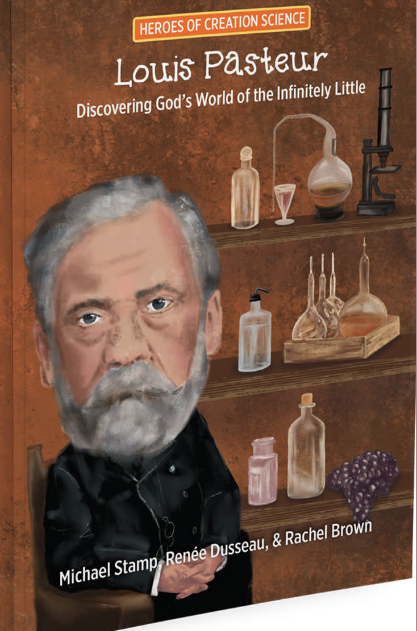Articles » Introductory
Penguins are one of only two bird groups of which it is claimed they once flew but have since lost this ability. The other group of flightless birds is the ratites, which include the ostrich, the kiwi, the rheas, and the emu. Read the rest of this entry »
The Creation Science Association of Alberta is delighted to announce that geologist Dr. Steven Austin has agreed to come to Edmonton for the November 7/09 weekend. He has agreed to deliver three lectures on the Saturday and also, we expect, one on the Friday evening, in a format much like the hugely successful event with Dr. Kurt Wise, this past fall. Get the latest here. Read the rest of this entry »

Slaughter of the Dissidents: the shocking truth about killing the careers of Darwin doubters
Jerry Bergman. 2008. Slaughter of the Dissidents: the shocking truth about killing the careers of Darwin doubters. Leafcutter Press. pp. 477.
There are so many stories: school teachers who lost their jobs, students who did not receive their earned degrees, candidates who did not secure academic jobs, university faculty who lost their jobs or who were assigned to less meaningful work – all had one thing in common – their colleagues feared they might criticize Darwinism. Read the rest of this entry »
Unless a lake is considered polluted, we don’t reflect much on all the living organisms that the waters contain. As a matter of fact however, most lakes have many different kinds of single celled plants (algae) floating happily in the top several metres of the water column. While in certain situations, people say that variety is the spice of life, many scientists worry about why there is such diversity/variety in lakes and the sea. Read the rest of this entry »
The mayor of New York City was at the news conference on May 19, 2009. The event was accompanied too by the showing of a special documentary film on TV, publication of a book on the topic and the unveiling of an interactive website. What could the occasion be? One of the individuals involved, Jorn Hurun of Norway, declared: “Any pop band is doing the same thing. Any athlete is doing the same thing. We have to start thinking the same way in science.” Read the rest of this entry »
Geologist Dr. Steven Austin has promised to provide Albertans with some fascinating and exciting information when he comes to Edmonton for the November 6-7 weekend. On the Friday evening, November 6 (Millbourne Alliance Church), he has promised to discuss “Mount St. Helens : Explosive Evidence for Creation.” Since the eruption of that volcano in 1980, Dr. Austin has presented this material to many audiences and the response is always very positive. Read the rest of this entry »
Although they may have been a little slow on their feet, it seems safe to say that horned dinosaurs represent a flamboyant and fun group to discuss. Read the rest of this entry »
The gecko, famous in some circles in car insurance commercials, is a very unique but average sized lizard. It is well known among biologists for its chirping vocalizations and its sophisticated adhesive toe pads that allow it to climb with ease up smooth vertical surfaces. Actually, the gecko’s ability to run vertically up and down at will has astonished almost everyone who has ever seen them, from Aristotle in the 4th century BC to today. Read the rest of this entry »
Every September, hundreds of thousands of Ontario butterflies converge on Point Pelee, a long peninsula which projects south into one of the Great Lakes. Then away they flutter, across the water and far beyond. Thus begins the amazing mass migration of an insect which unerringly navigates 4000 kilometers to a site where these individuals have never been. The Monarch butterfly, it turns out, is an astounding phenomenon. Read the rest of this entry »
The giant panda, one of the most popular and lovable zoo animals, is in the top ten of animal favourites. Called a super large teddy-bear, the panda has appeared as toys and dolls, on calendars, and thousands of other items. Reasons why it is so popular include its cute baby bear face, its cuddly soft roundness, and its clumsy playfulness. It was called a white bear for years because it has black fur on its legs, ears and around its eyes on an otherwise white body. Read the rest of this entry »
We don’t often think that extinct animals might have been examples of wonderful design, but they were! Even if we did reflect on extinct animals which were particularly well designed, we probably would not choose sauropod dinosaurs for that special category. Sauropod dinosaurs, you may remember, were the large plodding, four-footed specimens with long necks and long tails. They were probably the largest animals ever to have lived on land. They all grazed on plants. This was no doubt a good thing, since they probably were too slow to catch anything. So, you may well ask, what could be so special about these awkward looking creatures? Plenty! Read the rest of this entry »
Anniversaries are certainly special. Everyone recognizes that, and a two hundredth anniversary definitely merits plenty of attention. So it is that Fathom Media , in conjunction with Creation Ministries International has produced a spectacular overview on the significance of Darwin’s life (born 200 years ago) and of his famous book (published 150 years ago). This 54 minute DVD, filmed with the best technology, combines beautiful scenery shot on location in South America and England, with dramatic re-enactments from Darwin’s life. Read the rest of this entry »
Nature is so full of wonderful creatures that it must be hard to focus on one for special study. However in recent years, a strange assortment of animals have enjoyed a brief moment of scientific attention. In each case the occasion for this special fame was the publication of the genome of that organism. The genome consists of details concerning the DNA molecules in each cell of the organism. DNA, or the genetic information, is made up of four special molecules (called nucleotides) strung together. It is the order of the nucleotides, like beads on a string, which determines the information content of the DNA for each particular organism. Read the rest of this entry »
On the weekend of November 6/09 large crowds came to hear Dr. Steven Austin, senior research scientist from Institute for Creation Research, discuss his work in geology. On the Friday evening, he described events surrounding the eruption of Mount St. Helens in May 1980. One result was pyroclastic (very hot) mud flows which deposited and quickly eroded a canyon similar in appearance to the Grand Canyon, only at a smaller scale (one twenty fifth the size). This miniature, but still impressive, canyon, demonstrates that obvious layering of sediment and erosion of these layers can happen very quickly. No long ages are required. Read the rest of this entry »
Suppose that you were presented with the daunting task of learning as much as possible about some topic on which you, and other people, know almost nothing? How would you go about learning something? Why would you even bother? Would it matter to anyone if you did make this effort? Read the rest of this entry »





